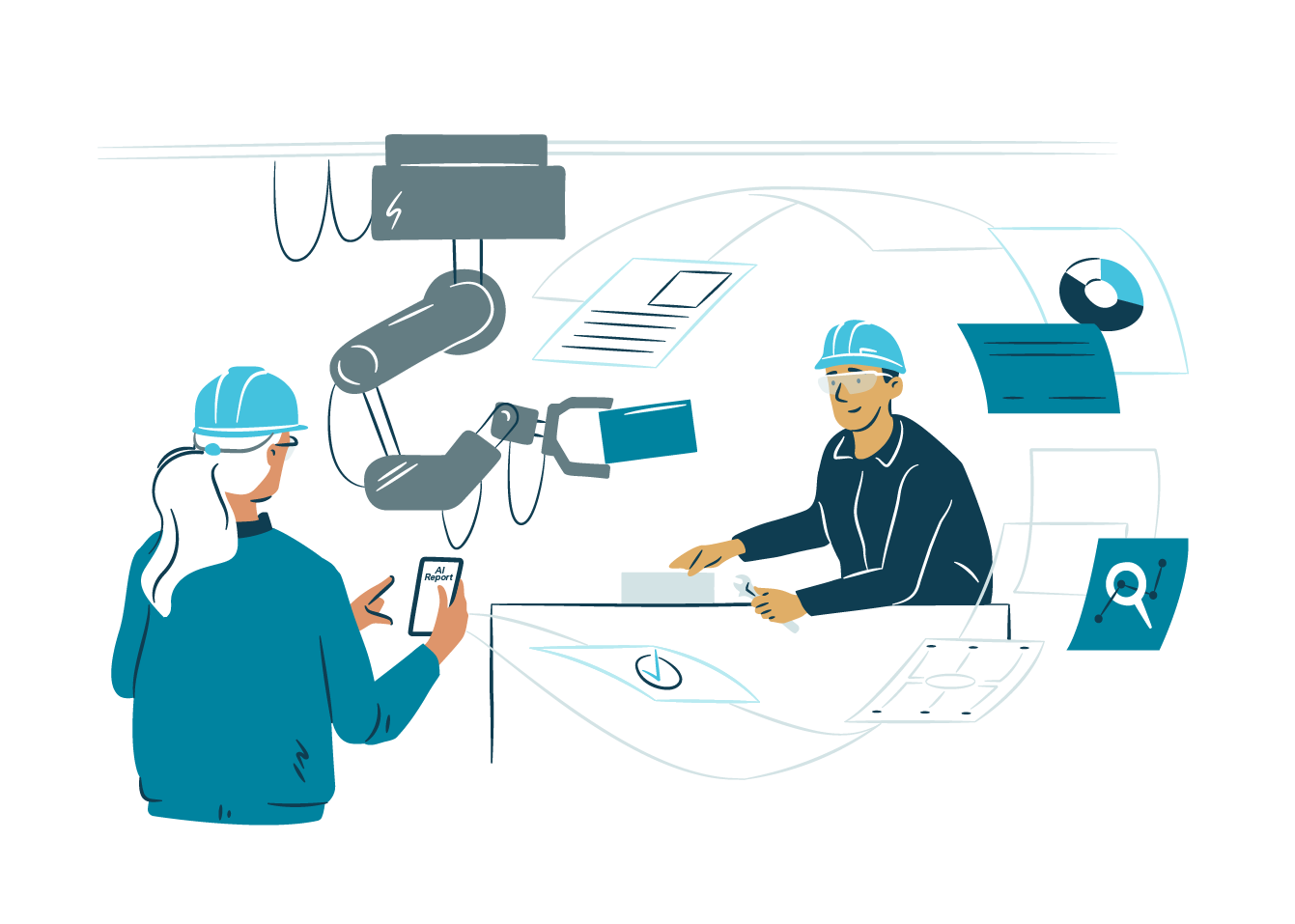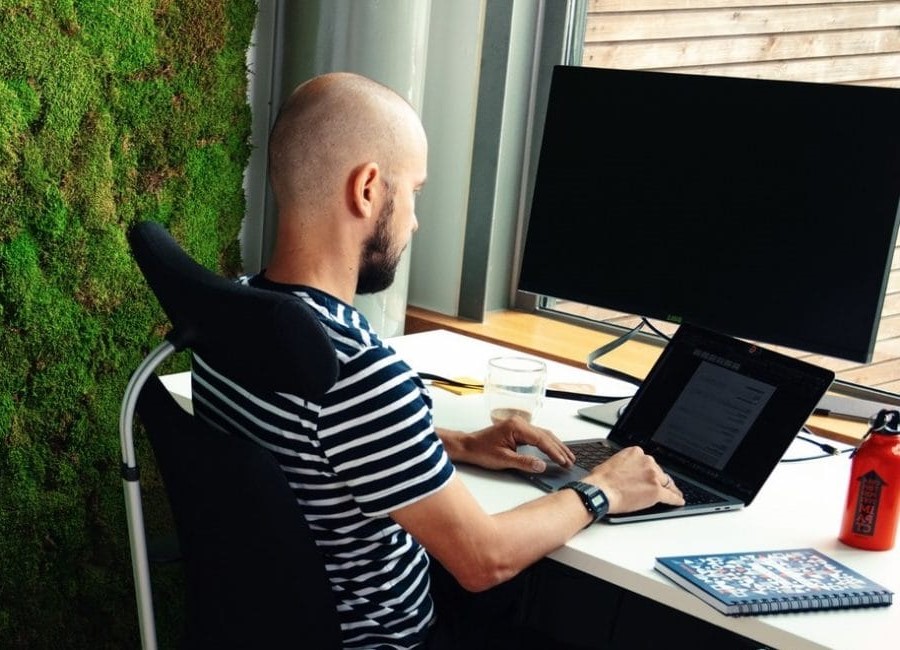Most companies want to be a good workplace for everyone, right? I know Gofore does; that’s why it is our first value. But how do you meet the needs of someone whose experience and needs you might not understand? Things that are invisible or insignificant to you, might be borderline life-changing for someone else.
While each of us is an individual with our specific needs and desires, belonging to a minority (of any kind) can mean that you have some different needs or face barriers that the majority of your co-workers can’t relate to, or haven’t thought of. Hence you might also be alone in advocating for those needs. That can be both taxing and feel like “maybe this isn’t worth all the fuss if it is just me”.
There are not many minorities I can speak for as an able-bodied, white, masculine-presenting, native Finnish-speaking person. However, I’m a part of the LGBT+ community and this past fall I came out at work as a transgender person, more specifically a trans man (in Finnish transsukupuolinen or transmies). In short, this means that at birth doctors declared me a female based on my physical characteristics, but that identity or body has never felt right. I see myself and identify as a young man.
When I came out, I had been at Gofore for a little over five months. And frankly, very little changed. I’m still the same employee working on the same code with the same tools. I’m not here to say that transgender employees need a lot of accommodation. Rather, I want to point out a few things that Gofore actually already happened to have in place that have made my life significantly better both before and after coming out. I say happened to have because I doubt that specifically trans people were in anyone’s mind. I am open to being proven wrong.
Why did you come out at work?
- As I’ve chosen to transition medically, I felt that coming out was inevitable. There’s no magic switch or “the operation” that will suddenly turn me from this pre-teen look into a bearded dude that doesn’t look 10 years below his actual age. Medical (hormonal) transition is a slow, gradual process (of taking hormones for the rest of my life) and I will go through ”a second puberty” once I start hormones.
- A bit before coming out at work, I had started using my new name in the university context. As my academic and professional circles weren’t isolated from each other, confusion arose and I started to feel like an incompetent spy trying to maintain two identities.
- Also, constantly watching how I talk about myself is exhausting and causes me stress that takes away from my work.
- I had then reached a point where hiding my identity caused be more stress than the potential risk of bad reactions.
- Finally, I have the privilege of having family and friends that accept and support me. If something were to go wrong with my coming out at work, I knew I could lean on them.
Not every trans person is this open about their identity. Due to stigma, prejudice, safety concerns, or some other reason we (transgender people) may choose to “live stealth”, meaning that we live as the gender we identify as without disclosing to others in our life that we are trans. Also, many are still in the closet, not being able to be fully themselves. Whatever the reason is for a trans person to keep their trans identity to themselves, I support their decision. Whether or when a person comes out, is their choice, and their choice only. They don’t owe it to anyone to come out and outing someone is wrong. And if someone is, for example, to out their colleague, it does not give anyone a right to tell, for example, a prospective client.
Things that made coming out easier:
1. Supportive colleagues
I joined Gofore in May 2019 at the Turku office, which at the time had around 15 employees. It was – and I believe still is – a tight-knit but very warm and welcoming group of people and I immediately felt at home there. Over the summer I built relationships with my co-workers in Turku – as well as in the Helsinki office, which I visited frequently, and then transferred to in the fall. I found people I trusted and felt supported by. At company of Gofore’s scale (we have almost 600 employees in 10+ offices), it is impossible to know everyone’s attitudes, believes, and perceptions. But because I felt there were people that would accept me and even have my back, coming out felt quite safe.
The worst I expected would be seeing occasional slurs on Slack, or having someone question my identity. And even that did not happen. The response I got and the messages I received were 100 % positive and supportive. This of course doesn’t mean that everyone is 100 % comfortable with my identity and presence and believes me – and I don’t expect or require that – but they were kind enough not to bring that to my attention.
It is not a given that a work environment feels safe for a transgender person to come out. It is not even obvious that a trans person wouldn’t be discriminated against, bullied, or even fired from their job because of their identity.
2. Gender-neutral single stall bathrooms
At least in the Helsinki, Turku, and Tampere offices, all restrooms are single-stall and not gendered. This caught my eye already when I came in for an interview and immediately raised Gofore’s points in my eyes. Public restrooms are anything but calming for me and many other trans people. I don’t feel safe or welcome in either binary option. I’ve been screamed at in a women’s restroom and using the men’s scares me because I am a tiny, weak man with a high voice. And while I was still in the closet, even picking a gendered single stall bathroom felt stressful. Either I would betray my identity or potentially raise questions. There really is no reason for gendered single-stall bathrooms. So I am glad Gofore doesn’t do that. After my house, the office is the least stressful place for me to use the restroom. I am a more relaxed and more productive employee because I am not stressed all day about where I can go to the bathroom.
3. Having the ability to change one’s name in systems
Finnish name law states that one’s name has to align with one’s legal gender – unless five other people that share one’s legal gender also have that name. That meant I couldn’t change my name to Ossian whenever I wanted. Instead I had to wait to go through diagnosis process at Tampere University hospital’s trans clinic. Once I was diagnosed as transgender, I was given a document that I could attach to my name change application to get around the name law. But that diagnosis process was still underway last fall and I knew any official changes would be months or even a year away. (I did get my diagnosis this April but processing of name change applications takes several months.)
I cared about the name change so much because I did not want to come out but then still have my legal name popping up everywhere – especially at work. I was already in that situation at university – and still am – and it was stressing me out. To my relief, Gofore had no issues with updating my name before legal changes. Thanks to payroll operating on the basis of social security numbers, my name could be changed, as far as I know, in all the systems (except maybe employee healthcare). The first time I sent an email from an address that had my chosen name on it, I teared up a little bit.
Had I not had the option to at least change my email, I might have waited until my legal name change before coming out (which at this rate won’t be before next fall).
4. Flexibility of work locations and hours
Part of being a transgender person and wanting to medically transition (take hormones, get surgeries) is having a lot of doctor’s appointments – first for diagnosis and later related to those hormones and surgeries. Because waiting lists are long and demand far exceeds available capacity, one cannot pick and choose their appointments. When you get an appointment, that’s when you’ll have to go, or you’ll have to wait another 2-6 months go get a new one. Additionally, there are clinics only in Tampere and Helsinki. At Gofore, I have a lot of flexibility regarding where I work from and when I get my work done and thus I never had to stress whether I could go to my appointments. When I had to travel from Turku to Tampere in the middle of a week, I did not need to take a day off or ask for special permissions. I brought my laptop to the train, and as I couldn’t get a full workday in that day, I made my hours back later.
This flexibility – and co-worker’s respect for my privacy – also allowed me to keep the reason for these trips to myself. I could either just say I was seeing a doctor in Tampere or simply say I was doing a remote day. Either way, I went to an appointment or two before coming out at work.
5. Low threshold for internal communication
One of the challenges of coming out at work is finding not just the right words but the right medium for telling people. A mass email would just get lost in everyone’s inboxes and this was too complicated of a topic to address in a single Slack message.
At Gofore we have an internal blog on Confluence where anyone can make a post. Usually people use it to introduce themselves when they join the company, publish proposals for public blog posts, or share internal information. It also provided me a great venue to come out. I wrote a blog post explaining my identity, some personal history, why I’m coming out, and finally explained what I expected of my colleagues: that they use my new name and pronouns (he/him). I also provided a summary section for those who wouldn’t be able to read the whole thing. Then, to make sure my post would reach people, I shared the post in Slack in the company-wide channel that, despite its reach, has still quite low threshold for posting and isn’t ”strictly business”.
Things that made coming out harder:
1. Being the only one
Though I likely wasn’t the only one among almost 600 employees, I did not know of any other trans people in the company. There was no success story I could take solace in nor nightmare I could fear. I couldn’t talk to anyone that was or had been in the same situation without first outing myself. I did eventually spot another LGBT+ person that I felt safe reaching out to. While I found comfort in that conversation and hearing their perspective, they aren’t trans and thus couldn’t tell me how I would be received.
This feeling of being completely alone is one of the reasons why I am sharing my experience. I hope not only to educate people but serve as representation I would have needed. However, that is my choice. No trans or other minority person has any obligation to provide visibility or education. We are not educational tools or diversity posters; we are people.
2. Slack conversations
In my process of evaluating risks and mentally preparing for coming out, I did the potentially very unwise thing of looking into my company’s Slack history. I used every search term I could think of to find conversations regarding LGBT+ people and read through every single result. While I didn’t find anything horrible or condemning, I left my search wondering whether I’d eventually end up debating my rights or identity with someone on Slack. At the same time, the limited number of conversations amplified the feeling of being alone. And though my colleagues are supportive, there are times when minorities are left to fend for themselves while others watch in silence.
I am not trying to deny your right to have conversations or make jokes. But when you are talking or joking about a minority – especially online – try to step back and look at your messages as if you were in that minority – or at least as if someone from that group was present. Would you say the same things aloud in an office that you’re writing on Slack? Does the lack of tone and facial expressions change how your message is viewed? Also, for me personally, it’s not the joke or comment that I am worried about, but potential attitudes and believes behind it. Will the person making a distasteful joke have a problem with me? I can’t know.
Gofore’s commitment to being a good workplace for everyone has laid a foundation that benefits all sorts of employees, including trans people. This is a great start, but I hope Gofore takes being a good workplace a step further by intentionally considering the needs of minority employees also, including trans people. Not because it’s good for the employer brand or gives us content to post during Pride month or other events, but because we want to make everyone’s work life better. And that is done by addressing their needs regardless of whether those needs stem from them being LGBT+, disabled, not speaking Finnish, having kids, having physical or mental health issues, going through a divorce, losing a family member, or whatever else. Some experiences, like being trans, are less common, have fewer advocates, and thus may not naturally come up. Hence supporting such groups requires intentional effort. I am looking forward to Gofore and other companies putting in that work.



